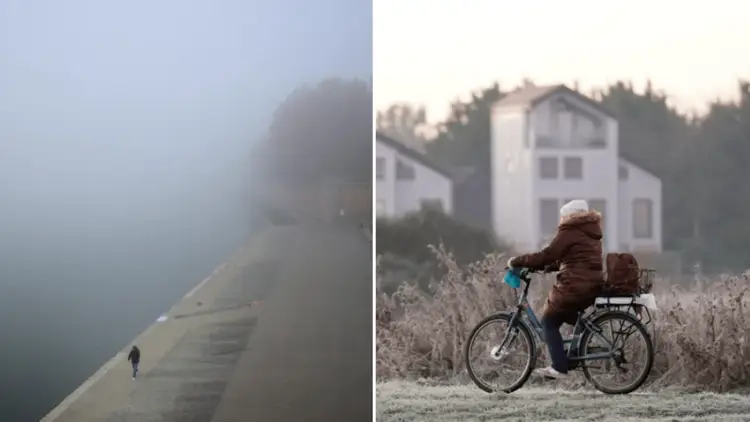Met Office issues fog warning as Scotland plunges to -9°C after Storm Conall chaos

A yellow weather alert for fog has been issued for certain areas in England and Wales, following a drop in temperatures in some regions of Scotland that fell to -9°C last night.

On Wednesday, travel was interrupted as intense rain from Storm Conall hit the southern regions of the country.
A fog alert has been announced for certain areas in western and southern England, as well as along the Welsh border, and it will remain in effect until 11 AM on Thursday.
Some areas may experience patchy fog, which could lead to challenging driving conditions. This reduced visibility might cause delays for buses and trains, and there's also a possibility of flight delays or cancellations.
As Storm Conall heads towards the Netherlands, the next few days will bring clearer and drier conditions in the eastern regions, while the western areas are expected to experience more clouds.
According to Greg Dewhurst, a meteorologist from the Met Office, the weather is now returning to what we would expect for late November.
Dewhurst mentioned, “Conall started moving away around midday on Wednesday, and it’s quickly becoming stronger—there's a significant storm developing as it heads toward the Netherlands.”
"The situation in the UK is improving, with high pressure moving in from the north. As a result, the weather is becoming drier and much clearer."

On Wednesday night, temperatures fell below zero in the countryside, hitting a chilly -9°C in Braemar, Aberdeenshire. This resulted in icy spots, areas of freezing fog, and a widespread frost covering the landscape.
According to Dewhurst, Thursday is expected to be mostly clear but chilly. He also mentioned that light winds will lead to the development of some fog patches.
On Friday, the weather will also differ between the eastern and western regions.
This weekend is expected to bring cooler breezes, though most of the rain will mainly affect the northern and western regions of the UK.
Light rain showers could make their way to the southeastern parts of England by Sunday.
Dewhurst stated: “In general, it appears that this weather pattern will persist, with fronts moving in from the Atlantic, primarily impacting the northern and western regions. There may be a few rain showers in the southeast, but overall, temperatures will remain close to the average.”
Following Storm Conall's impact earlier this week, there are currently 62 flood warnings and 134 flood alerts in effect across England and Wales as of 10 a.m. on Thursday.

The Environment Agency explains that when a flood warning is issued, it indicates that flooding is anticipated. On the other hand, a flood alert suggests that flooding could occur.
Why You Can't Trust One-Week Snow Forecasts
A representative from the Met Office has cautioned that snow predictions made weeks ahead of time should be viewed with skepticism as the United Kingdom enters the height of winter.
Weather experts have uncovered a reliable method to determine whether snow is actually imminent in the UK, and it all comes down to timing.
Stephen Dixon, a representative of the Met Office, stated, “Snow stories have been making waves in some media outlets for quite a while now. However, the confidence shown in media predictions about snow in specific places a week ahead should be approached with caution.”
According to Dixon, the reason for this is that predicting snowfall requires considering more factors compared to other weather conditions.
Forecasting snowfall is generally more challenging than predicting other severe weather events, such as tropical storms.
"According to Dixon, snow requires several conditions to come together."
Determining when and where snow will occur is complicated, as it involves many competing factors that meteorologists must consider. These factors include the source of the air, the intensity of precipitation, and the locations where different weather fronts converge.
Due to the numerous variables involved, it's typically best to only consider forecasts seriously about three to four days before the expected snowfall.
According to Dixon, this is the sole method that meteorologists use to determine if all the critical factors for producing snowfall will coincide at the same time and location.
"The forecast can be greatly affected by minor details," a representative from the Met Office shared with i.

















































